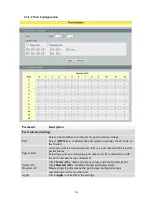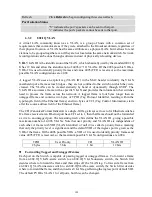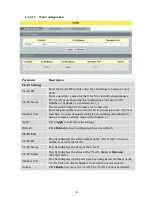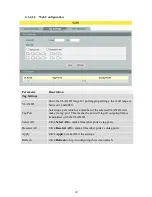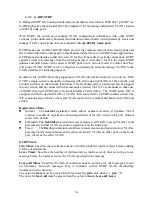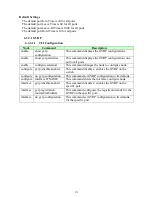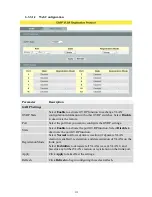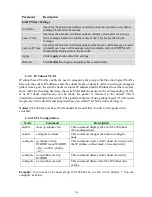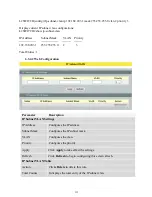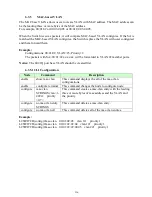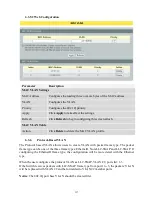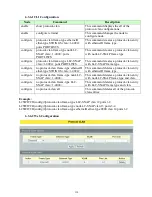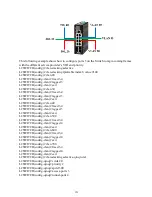
110
6.3.3
GARP/GVRP
GARP and GVRP are industry-standard protocols that are described in IEEE 802.1p.GVRP is a
GARP application that provides 802.1Q-compliant VLAN pruning and dynamic VLAN creation
on 802.1Q trunk ports.
With GVRP, the switch can exchange VLAN configuration information with other GVRP
switches, prune unnecessary broadcast and unknown unicast traffic, and dynamically create and
manage VLANs on switches that are connected through
802.1Q trunk ports
.
GVRP makes use of GID and GIP, which provide the common state machine descriptions and
the common information propagation mechanisms defined for use in GARP-based applications.
GVRP prunes trunk links so that only active VLANs will be sent across trunk connections. GVRP
expects to hear join messages from the switches before it will add a VLAN to the trunk. GVRP
updates and hold timers can be altered. GVRP ports run in various modes to control how they
will prune VLANs. GVRP can be configured to dynamically add and manage VLANS to the
VLAN database for trunking purposes.
In other words, GVRP allows the propagation of VLAN information from device to device. With
GVRP, a single switch is manually configured with all the desired VLANs for the network, and
all other switches on the network learn those VLANs dynamically. An end-node can be plugged
into any switch and be connected to that end-node's desired VLAN. For end-nodes to make use
of GVRP, they need GVRP-aware Network Interface Cards (NICs). The GVRP-aware NIC is
configured with the desired VLAN or VLANs, then connected to a GVRP-enabled switch. The
NIC communicates with the switch, and VLAN connectivity is established between the NIC and
switch.
Registration Mode:
Normal : The
normal
registration mode allows dynamic creation (if dynamic VLAN
creation is enabled), registration, and deregistration of VLANs on the trunk port. Normal
mode is the default.
Forbidden: The
forbidden
registration mode deregisters all VLANs (except VLAN 1) and
prevents any further VLAN creation or registration on the trunk port.
Fixed
: The
fixed
registration mode allows manual creation and registration of VLANs,
prevents VLAN deregistration, and registers all known VLANs on other ports on the trunk
port. (Same as the static VLAN)
GVRP Timer:
Join Timer:
Specifies the maximum number of milliseconds the interface waits before sending
VLAN advertisements.
Leave Timer:
Specifies the number of milliseconds an interface waits after receiving a leave
message before the interface leaves the VLAN specified in the message.
Leave-All Timer:
Specifies the interval in milliseconds at which Leave All messages are sent
on interfaces. Leave-all messages help to maintain current GVRP VLAN membership
information in the network.
The value for
leave
must be greater than three times the
join
value (
leave
>=
join
* 3).
The value for
leave-all
must be greater than the value for
leave
(
leave-all
>
leave
).
Summary of Contents for NGI-M08C4POE8-2
Page 1: ......
Page 197: ...197 Clear Clear the statistics of the valn ...
Page 298: ...298 9 2 2 Web Configurations ...






